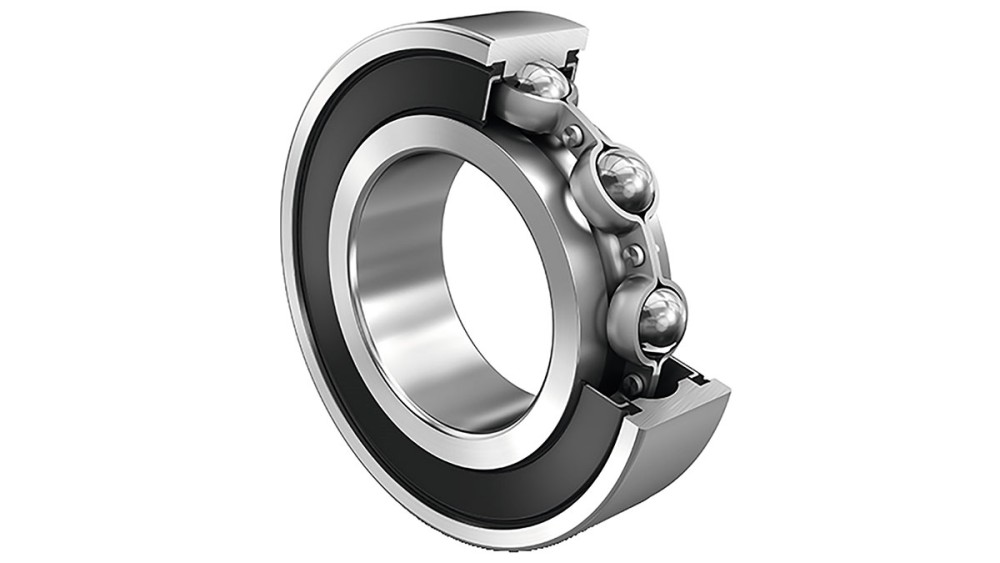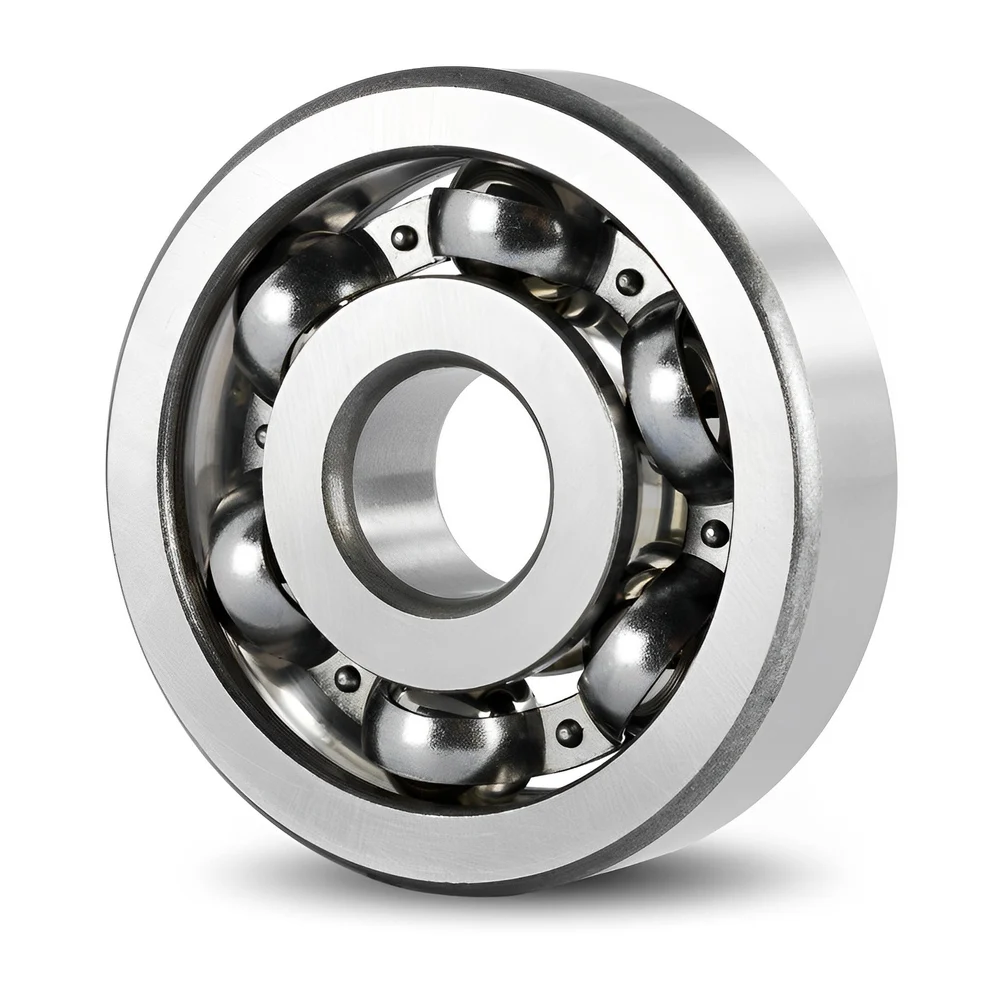What are the signs of wear or damage in deep groove ball bearings, and when should they be replaced?
Deep groove ball bearings, like any mechanical component, can experience wear or damage over time. It is important to identify the signs of wear or damage in bearings and know when they should be replaced to prevent further issues. Here’s a detailed explanation of the signs of wear or damage in deep groove ball bearings and when they should be replaced:
- Abnormal Noise:
- Excessive Vibration:
- Increased Temperature:
- Irregular or Uneven Operation:
- Visible Wear or Damage:
- Lubrication Issues:
- Operating Conditions:
Unusual noises, such as grinding, clicking, or rumbling sounds, can indicate bearing wear or damage. These noises may occur during operation and can be an indication of insufficient lubrication, misalignment, or the presence of foreign particles. If abnormal noise is detected, it is recommended to inspect the bearings promptly and replace them if necessary.
Excessive vibration during operation can be a sign of bearing wear or damage. Vibrations may occur due to misalignment, imbalance, or the presence of faulty bearings. If the vibration levels are unusually high and cannot be attributed to other factors, the bearings should be inspected and replaced if needed.
Significantly increased operating temperature of the bearings can indicate wear or damage. Excessive friction caused by worn-out or misaligned bearings can generate excessive heat. If the temperature of the bearings exceeds the recommended operating limits, it is advisable to investigate the cause and replace the bearings as necessary.
Irregular or uneven operation of the equipment or machinery can be a symptom of bearing wear or damage. This may manifest as erratic or jerky movements, decreased performance, or decreased efficiency. If such irregularities are observed, the bearings should be inspected to determine if replacement is required.
Physical inspection of the bearings can reveal visible signs of wear or damage. These signs may include pitting, rust formation, scoring, or discoloration on the bearing surfaces. Excessive wear or damage that affects the smooth rolling motion or integrity of the bearings should prompt immediate replacement.
Problems with lubrication, such as inadequate or contaminated lubricant, can contribute to bearing wear or damage. Insufficient lubrication can lead to increased friction, heat generation, and accelerated wear. If lubrication-related issues persist despite proper maintenance, it may be necessary to replace the bearings.
The operating conditions of the equipment or machinery can also influence the lifespan of deep groove ball bearings. Factors such as heavy loads, high speeds, extreme temperatures, exposure to corrosive environments, or prolonged use can accelerate wear or damage. In such demanding conditions, bearings may need to be replaced more frequently to ensure reliable operation.
It is important to note that the timing of bearing replacement depends on various factors, including the severity of wear or damage, the criticality of the application, and the manufacturer’s recommendations. Regular inspection and maintenance practices, as well as monitoring of the aforementioned signs, can help determine the appropriate timing for bearing replacement. Consulting with bearing manufacturers or maintenance professionals can provide valuable guidance in assessing the condition of deep groove ball bearings and making informed decisions regarding replacement.
In summary, signs of wear or damage in deep groove ball bearings include abnormal noise, excessive vibration, increased temperature, irregular or uneven operation, visible wear or damage, lubrication issues, and demanding operating conditions. Prompt replacement of bearings exhibiting these signs is essential to prevent further damage, avoid equipment failure, and ensure the continued smooth and reliable operation of machinery or equipment.
Can you explain the design principles of deep groove ball bearings and their functions?
Deep groove ball bearings are designed based on specific principles to ensure their optimal performance and functionality. Here’s a detailed explanation of the design principles of deep groove ball bearings and their functions:
- Internal Geometry:
- Rolling Elements:
- Cage:
- Sealing and Shielding:
- Lubrication:
- Mounting and Fitting:
The internal geometry of deep groove ball bearings is characterized by the presence of deep raceway grooves in both the inner and outer rings. These grooves enable the bearings to accommodate radial loads, axial loads, or a combination of both. The geometry of the raceway grooves is designed to distribute the load evenly along the rolling elements, minimizing stress concentrations and maximizing load-carrying capacity.
Deep groove ball bearings utilize steel balls as rolling elements. The balls are typically made of high-quality bearing steel and are precision-ground to ensure smooth and consistent rolling. The number, size, and arrangement of the balls in the bearing determine its load-carrying capacity and rotational characteristics. The rolling elements reduce friction and enable the efficient transfer of loads, allowing the bearing to operate with minimal energy losses.
A cage, also known as a retainer, is used in deep groove ball bearings to separate and guide the rolling elements. The cage holds the balls in position, ensuring proper spacing and alignment, and preventing contact between them. The main function of the cage is to maintain ball separation, reduce friction, and enable smooth rotation. Common cage materials include steel, brass, or synthetic polymers.
Deep groove ball bearings may incorporate sealing or shielding mechanisms to protect the internal components from contaminants and retain lubrication. Seals are designed to provide a barrier against dust, dirt, and moisture, while shields offer protection from larger particles. These protective features help extend the bearing’s service life, improve reliability, and maintain proper lubrication conditions.
Lubrication is essential for the smooth operation and longevity of deep groove ball bearings. Proper lubrication reduces friction, heat generation, and wear of the bearing components. The choice of lubricant and the method of lubrication depend on the application requirements and operating conditions. Common lubrication methods include grease packing, oil bath, oil mist, or centralized lubrication systems. Adequate lubrication ensures optimal performance, reduces maintenance needs, and extends the bearing’s lifespan.
Deep groove ball bearings are designed for easy mounting and fitting onto shafts or in housings. They typically have standardized dimensions and tolerances to facilitate interchangeability. Proper mounting techniques, such as using the correct fitting tools and applying appropriate axial and radial clearance, are crucial for achieving optimal bearing performance, reducing stress, and preventing premature failure.
In summary, the design principles of deep groove ball bearings encompass internal geometry with deep raceway grooves, rolling elements in the form of steel balls, cages for ball separation, sealing or shielding mechanisms for protection, lubrication systems for friction reduction, and easy mounting and fitting. These design elements work together to ensure the smooth operation, load-carrying capacity, durability, and reliability of deep groove ball bearings.
What challenges are associated with minimizing noise and vibration in deep groove ball bearings?
Minimizing noise and vibration in deep groove ball bearings can be challenging due to several factors that can contribute to these unwanted effects. While deep groove ball bearings are designed to provide smooth and quiet operation, certain challenges need to be addressed to achieve optimal noise and vibration levels. Here’s a detailed explanation of the challenges associated with minimizing noise and vibration in deep groove ball bearings:
- Internal Clearance and Preload:
- Manufacturing and Assembly Variations:
- Lubrication:
- Operating Conditions:
- Application-Specific Challenges:
The internal clearance and preload of deep groove ball bearings can significantly impact noise and vibration levels. Insufficient preload or excessive internal clearance can result in excessive ball movement, leading to increased vibration and noise generation during operation. On the other hand, excessive preload can cause additional bearing stress and potential noise issues. Achieving the proper balance between preload and internal clearance is crucial to minimize noise and vibration in deep groove ball bearings.
Manufacturing and assembly variations can introduce irregularities or imperfections in deep groove ball bearings, leading to increased noise and vibration. Variations in ball size, shape, or surface finish, as well as irregularities in raceway profiles or cage design, can contribute to uneven loading, increased friction, and vibration. Strict quality control measures and precision manufacturing techniques are essential to minimize these variations and ensure consistent performance and reduced noise levels across deep groove ball bearings.
Lubrication plays a critical role in minimizing noise and vibration in deep groove ball bearings. Insufficient or improper lubrication can result in increased friction, wear, and noise generation. Inadequate lubrication film thickness can also lead to metal-to-metal contact and increased vibration levels. Proper selection and application of suitable lubricants, taking into account factors such as speed, temperature, and load conditions, are essential to maintain optimal lubrication and mitigate noise and vibration issues.
The operating conditions in which deep groove ball bearings are used can pose challenges in minimizing noise and vibration. Factors such as high speeds, heavy loads, misalignment, or temperature variations can induce vibrations and increase noise levels. In some cases, external factors such as electrical or magnetic fields can also impact the performance of deep groove ball bearings. Understanding the specific operating conditions and selecting bearings with appropriate load and speed ratings, as well as implementing proper alignment and environmental controls, are crucial to minimizing noise and vibration.
Each application may have its unique challenges in minimizing noise and vibration in deep groove ball bearings. For example, in electric motors, the electromagnetic forces can introduce additional vibrations and noise. In such cases, careful design considerations, such as optimizing bearing selection, mounting techniques, and implementing vibration dampening measures, may be necessary to address these application-specific challenges.
In summary, minimizing noise and vibration in deep groove ball bearings requires addressing challenges related to internal clearance and preload, manufacturing and assembly variations, lubrication, operating conditions, and application-specific factors. By understanding these challenges and implementing appropriate measures such as precise manufacturing techniques, proper lubrication practices, suitable bearing selection, and application-specific considerations, it is possible to achieve reduced noise and vibration levels, resulting in smoother and quieter operation of deep groove ball bearings.
editor by CX 2024-04-23




